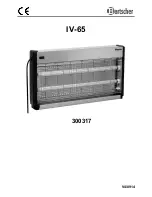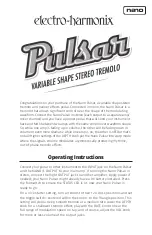Reviews:
No comments
Related manuals for LT4

N10
Brand: Makerfire Pages: 10

P1
Brand: Palazzetti Pages: 112

CT1
Brand: B&K Pages: 12

DVCPRO P2 Series
Brand: Panasonic Pages: 32

RQ SERIES
Brand: AAON Pages: 36

1500/17
Brand: Bartscher Pages: 28

IV-65
Brand: Bartscher Pages: 13

TS100
Brand: IBEX Pages: 10

R3 Series
Brand: M-system Pages: 12

HDT 300
Brand: e+p Elektrik Handels Pages: 2

X10
Brand: Eaton Pages: 21

Pulsar
Brand: NANO Pages: 4

AD Series
Brand: Federal Signal Corporation Pages: 4

GS2
Brand: ParaBody Pages: 7

330A
Brand: Patty-O-Matic Pages: 28

BeamLine VL800
Brand: Vari Lite Pages: 14

VANGUARD 1X
Brand: Vaniman Pages: 3

EVOMAX 2 30
Brand: Ideal Heating Pages: 16

















